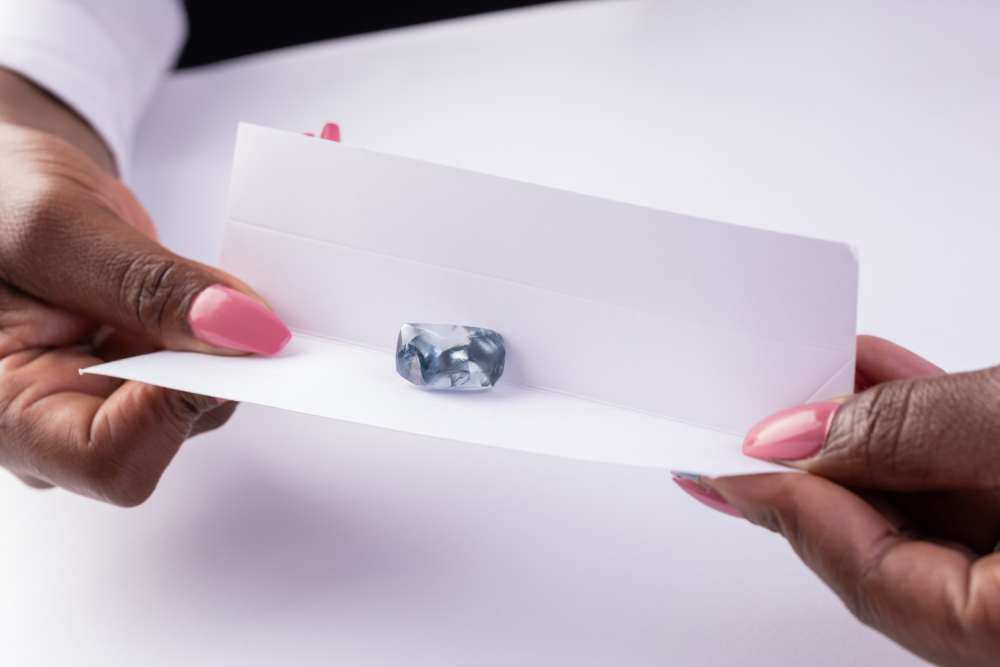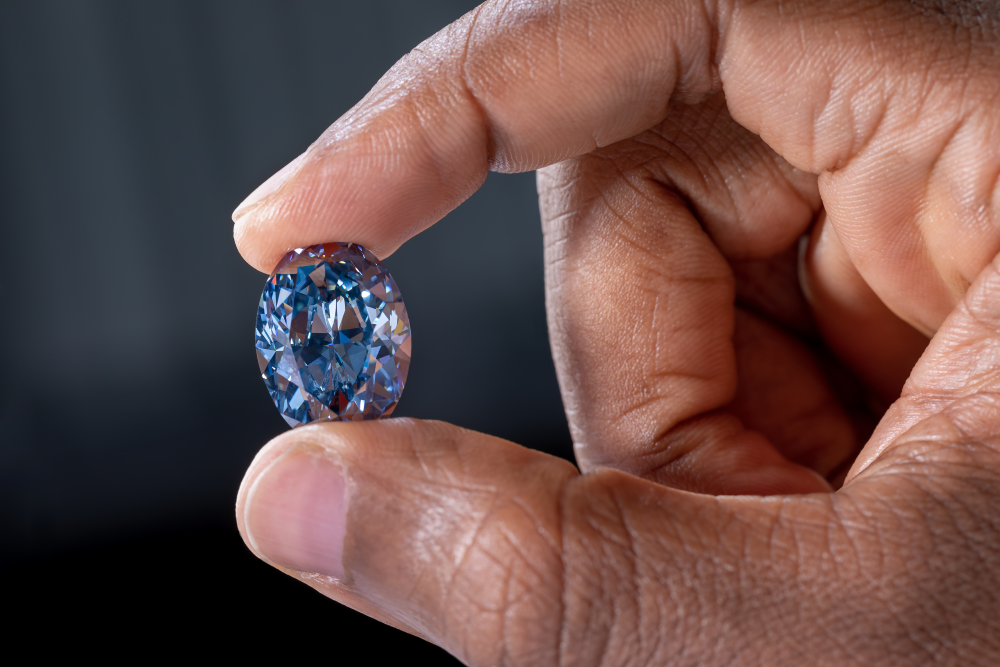An oval-shaped blue diamond weighing 20.46 carats is one of the rarest in the world. Named the Okavango Blue Diamond, it was discovered at Orapa mine in Botswana, and it holds many secrets about our Earth in its curious azure hue.
“From the first moment we saw the diamond, it was clear we had something very special,” said Marcus ter Haar of Okavango Diamond Company in a statement. “Everyone who has viewed the 20-carat polished diamond has marveled at its unique coloration, which many see as unlike any blue stone they have seen before. It is incredibly unusual for a stone of this color and nature to have come from Botswana – a once-in-a-lifetime find.”
The diamond is thought to have come from around 668 kilometers (415 miles) below the ground, reports PopSci. This depth is a place where boron isn’t that common, and yet the Okavango diamond is full of it. It contains more boron than nitrogen, an element that’s far more common in the environment and typically holds the majority share of most diamonds.
Somewhat poetically, Okavango’s blue is tied to the big blue, as it’s thought boron was able to make it so deep into the Earth as a result of tectonic plates colliding, sending one underground and taking boron from the ocean with it. All of this happened a cool three billion years ago. It’s a process known as subduction and one we’re learning more about through rare and peculiar gems like the Okavango blue diamond.

The uncut Okavango Diamond.
Image credit: Okavango Diamond Company
It was declared a “once-in-a-lifetime find” following its discovery by the government-owned Okavango Diamond Company (ODC) in Botswana. As a rough stone, it weighed 41.11 carats, but as a cut diamond, it’s now graded as a Type llb “Fancy Deep Blue” and an Oval Brilliant Cut, one of the highest polished color classifications a blue diamond can be awarded.
These stones are only found in certain mines across the world, and it’s because the gems here share a geological history that contributed to their coloration. Diamonds are typically colorless as amalgamations of carbon atoms, but impurities can give them different colors.
Colored diamonds are rare, representing about 0.01 percent – one in 10,000 – of diamonds mined across the planet. Blue, pink, green, violet, orange, and red are the rarest of them all, while yellow and brown are a bit more common.

The diamond in its polished form.
Image credit: Okavango Diamond Company
The title of the world’s most expensive diamond may be about to go to a pink hunk o’ carbon called the Lulo Rose. Like the Okavango diamond, it comes from a mine where several other rocks of the same hue have been discovered, but here it’s the result of continental stretching and the occasional diatreme spurting them out on the surface.
We’re learning more and more about diamond formation and distribution as time goes on, and a recent discovery about how they travel to the surface may help us find them. Of course, if you can’t find one, you can always be turned into one.
Source Link: 3-Billion-Year-Old Okavango Diamond Has A Unique Blue Hue Thanks To Plate Tectonics